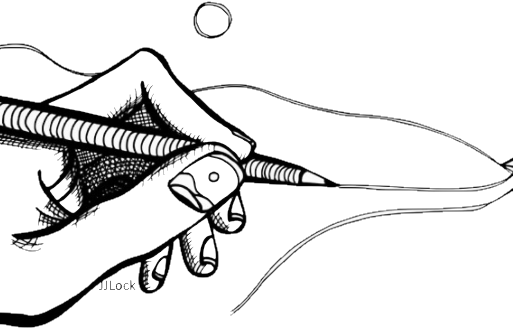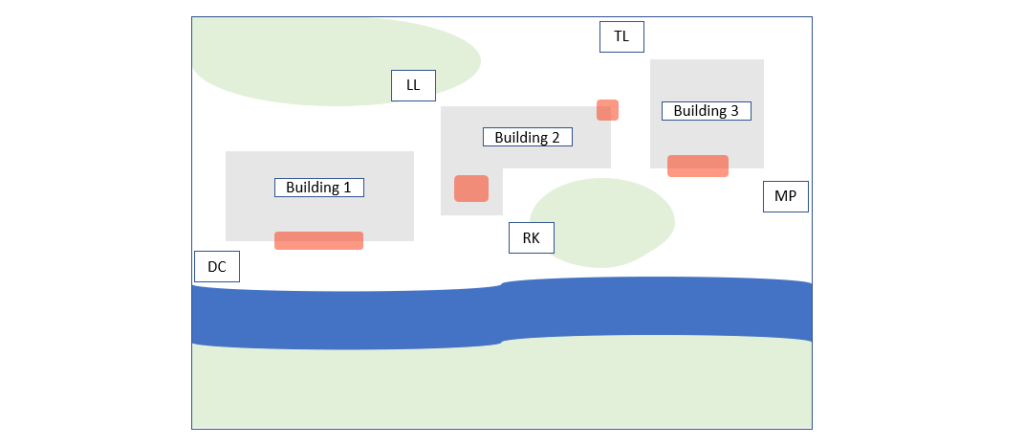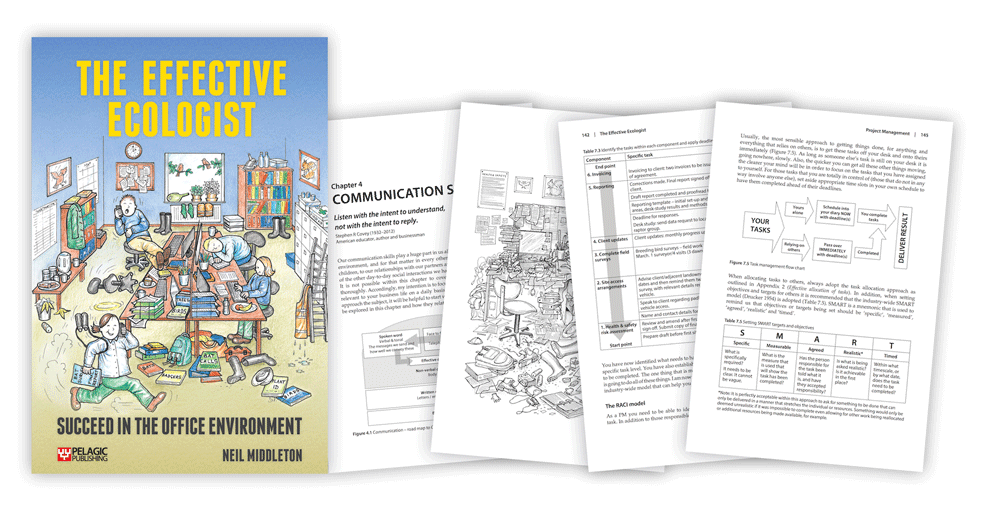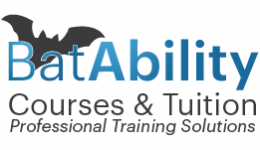
After attending the session on Report Writing, presented by Neil Middleton (BatAbility Courses & Tuition), during the BCT Big Bat Skills event (Online, Feb 2021), I thought it would be good to share this article with you. The information discussed does not necessarily reflect the content of the workshop, but the article has been written in conjunction with thoughts provided by Neil, who is also the author of The Effective Ecologist, Succeed In The Office Environment.

I have spent much time scratching my head trying to plan how to approach a report. It is often best to take a step back and to find out as much as you can before you even put a metaphorical pen to paper or finger to keyboard!
Indeed, it is often a good idea to have a handle on the kind of information detailed below, even before you have done your survey, as it will ensure that you collect the right information, and will have a full portfolio of information when you come to write it all up. In this respect, understanding precisely for what purpose the report is intended is paramount, as well as the audience (i.e. readers) who will be accessing the information contained within the document.
Before you start any site visits
Existing resources: Is there some guidance available in your organisation about the creation of the kind of report that you need to write? Is there an example available that will give you a starting point, or is there a template that someone has already set up? Never feel worried about asking around for this type of information, in fact, it may be viewed negatively if you had not asked!
Style: Does your company have brand guidelines? In other words, is there a particular format that is required that enables anyone looking at the document to immediately recognise that it has originated from your company? It is always a good idea to standardise the format of your documentation! This could even boil down to the font type and spacing that you use. Have a chat with your line manager, colleagues, or the marketing department (if you have one), for guidance in this respect.
Audience: As mentioned right at the start, who are you writing for? Why is the report required? You should already have the objective of your work in mind, if not you should find out as soon as possible from your line manager, or directly from the client. You need to keep referring back to this objective throughout the writing process so that what you write stays relevant and focused. It should not deviate from the purpose for which the report is intended.
How should you pitch it? When you talk to your client you need to assess the level at which you are going to communicate. You may have very specialist knowledge that you could end up using in a way that freezes your client out. Ensure your writing style does not close your reader down.
Avoid jargon. Write in straightforward language & be clear, as well as concise.
Your first reference to any acronyms should be in full the first time that you mention them. For example: I went to the Big Bat Skills Event that was organised by the Bat Conservation Trust (BCT). It was really nice to meet everyone and attend sessions. I am looking forward to seeing other events that the BCT arrange.
Also, think about the type of reaction that your reader may have to your messaging.
Make it punchy: no one has the time to wade through reams of information. Images, tables, diagrams, and the like, really do speak volumes! Present the information in a format that is digestible. Think about what your main messages are and then insert any additional or supporting information into the appendix.
Why write 500 words when 100 will suffice? If any words can be removed from a sentence without altering the meaning or clarity of the sentence this is what you should do. Less is more, quite often.
Keep it factual and keep it relevant.
Think about making it visually appealing too. This may be down to something as simple as line spacing or the justification of text, or the clever use of figures/images and tables/graphs.
As a last thought for this - write in the third person, never the first. Keep a check on your tenses.
Be smart: collect as much resources as you can from your client so that you can present their information back to them with the added benefit of your notes. They will be familiar with the content and you will save a lot of time.
Planning: Mutually agree on a timeline with your client after figuring out your own capacity and the capacity of your team to deliver to the required deadline. You may need to take account of, if applicable, people who will be providing GIS expertise and local records searches, as well as your own time constraints and those of the assigned proof-reader. Work out all of the other technical support that you may need at the very start of the process. Setting up a Gantt chart for you to work within its parameters, is an excellent technique, and of course, this could be shared with your colleagues, or even the client, to make sure that everything has been taken into account, and you are remaining on target to achieve the right outputs by the agreed completion date.

General good practice: think about writing and analysing data as you go. The information will be fresh in your mind and will also have a steer on how you go about things on site. For example, you may analyse some data and realise that you are missing some key information - this may not be a big deal as you may be able to adapt further surveys, or pick up on what was missed, during your next site visit.
Plan to form a bit of cohesion: number each section of your write-up and cross-reference to relevant information so that you don't have to repeat yourself. Make sure that you number figures and tables, so that you are able to refer to them within your report. Refer to your Appendices too!


The Report
When you write your formal report you need to have your analytical ecologist hat on and your report writing hat on. Imagine you are writing for an alien that has landed in your back garden. Everything that you include must be done so in a way that is clear and accessible to the reader. Only talk about stuff that matters, but ensure there is enough of the relevant detail conveyed, be that with words or, often preferably with supporting pictures, tables, and the like.
So, here is the layout you should have:
- Title Page
- Contents
- List of Tables and the pages they appear on (optional)
- List of Figures and the pages they appear on (optional)
- Executive Summary
- Main Body
- Appendices
Title Page

Executive Summary (less than 1 page; up to 500 words)
An executive summary outlines:
- who was involved?
- why this work has been done?
- when was it done, how was it done?
- what was found?
- what are the conclusions/recommendations?
- how long are the results relevant for?
"In [Date], [Consultancy Name] was commissioned by [Client] to undertake a survey of [Location, Grid Reference] to assess the potential for use by bats.
A [Type of Survey] was undertaken by [Surveyors/Survey Details] on [Date] in or to [Reason]. No evidence was recorded…. No bats were observed or recorded using the building for roosting and the site was determined to be of negligible potential for roosting bats. The surveyor considers the survey effort to be reasonable to assess the roost potential of the building and no further survey work is deemed appropriate.
The surveyor does not consider the proposed development and change of use is likely to result in a breach of [Appropriate Legislation]."
I would really like to encourage that you look at some real-life consultancy reports at this point. It is good practice to learn how to punch a lot of content and meaning into a small space.
Introduction (2 pages) - The context behind the survey
The introduction can include, for example:
- Who was commissioned and who commissioned the survey
- [Your Company] was commissioned in [Date] by [Company] to complete bat surveys at [Site Address] following a Preliminary Roost Survey (PRA) which was undertaken on [Date] by [Your Company].
- Information on the proposed development
- The Site is centred on approximate National Grid Reference [Reference] (Appendix #: Site location map and map indicating key characteristics).
- Reason for the survey
- This report has been prepared as part of a planning application to [Body] for the [Reason for the application]. [Detail the scope of works].
- The objectives of the survey
- To consider the potential impact of the above-mentioned development on bats and their roosting, foraging [etc] activities. To give recommendations for the actions that should be undertaken by [Company] to minimise or mitigate impacts on bats (Section #), including [etc]. To advise [Company] so that the design of the scheme, the proposed development, will be compliant with [planning policy and environmental legislation] (detailed in appendix #.#).
- Previous survey work if applicable
- Objectives
Methods (up to 2 pages) - How you did it
Detail the exact methods that you used, including the following:
- Study scope
- PRA
- Roost characterisation
- Activity surveys, emergence and re-entry
- Hibernation surveys (note should be included in every report regardless of the season/time of year)
- DNA analysis
- Transect survey
- Analysis of calls
- Desk Study...
- Relevance of methods
- State the relevance of your methods in relation to guidance. For example - "in accordance with standard methods [reference]"
- Detail exact methods (put in a table to make it easy to read - include a map of surveyor positions, along with details of any inaccessible areas, and the competencies of each surveyor in the appendices - make sure that you refer to these resources in your content so that your reader knows it is there).
- Where a method was undertaken
- Dates
- The surveyors
- The equipment that was used
- Weather conditions
- Start/Finish times
Results (between 3 or 4 pages) - What you observed
In this part explain what you saw not why you saw it!
Report what you didn't observe too! If there were no bats in an area then state it! Everything is important - everything tells the story.
Include aids to make it easier to visualise your results. Refer to your site map to indicate surveyor locations and highlight broad areas where observations were made (make sure you colour-code findings and add a key and a figure title at the bottom). Observations may be the detection of a bat in an area or the discovery of a bat roost, or the results of material gathered (e.g. bat droppings making DNA possible to arrive at a result). Then drill down into these areas, but only to a level that the reader needs to appreciate what was found, without overloading the reader with all of the detail, much of which can be placed within an appendix.

Annotated photographs can be a good resource here. Be quite explicit about exact areas that the bats went to or came from, and if it is a roosting location for example. Include additional close-up images, as appropriate. Detail geographical locations and GIS information.

Discussion (up to 2 pages) - What you found out
The discussion should dive into the meaning of the results and any factors that may influence these findings:
- Habitat assessment
- Building assessment: talk about what all the evidence points to? What does it mean? Are there hibernation opportunities?
- Summary impact assessment
- Study limitations: if there were any significant constraints.
Report as much as you can: Make sure that you mention any locations that are not appropriate for bats or other species (if you are not a bat person), as well as mentioning the locations that are ideal for that species.
Conclusion (up to 1 page) - What everything points to
Recommendations (up to 1 page) - Your advice
This is your advice but also can include a SMART action plan.
- Specific well-defined goal
- Measurable
- Agreed - assign each point to a specific person.
- Realistic
- Time-bound
References
There are many ways to reference someone or their work, but the key is to keep it consistent. Write your reference in brackets within your main report, for example (Johnson et al, 2002), and then make sure you put the full reference in the references section.
- MLA Johnson, Joshua B., et al. "Paper Title." Wildlife Society Bulletin (2002): 931-936.
- APA Johnson, J. B., Menzel, M. A., Edwards, J. W., & Ford, W. M. (2002). Paper Title. Wildlife Society Bulletin, 931-936.
- Chicago Johnson, Joshua B., Michael A. Menzel, John W. Edwards, and W. Mark Ford. " Paper Title." Wildlife Society Bulletin (2002): 931-936.
- Harvard Johnson, J.B., Menzel, M.A., Edwards, J.W. and Ford, W.M., 2002. Paper Title. Wildlife Society Bulletin, pp.931-936.
- Vancouver Johnson JB, Menzel MA, Edwards JW, Ford WM. Paper Title. Wildlife Society Bulletin. 2002 Oct 1:931-6.
I have only ever used Harvard. The thing to remember is - it is not necessary to type all of these out as there is software that can actually organise your references for you:
There are plenty more out there, but these might be fine for you. It is a personal choice (or perhaps a business choice).
Appendix
The appendices area is like your loft - the things that you don't want cluttering up the rest of your house, which are still important but needs to be stored away ready for use by someone who is interested in finding out more about a particular aspect.
So, the things that would go here are:
- Raw data
- Site maps
- Conservation status of the species
- Information about the surveyors, including their bat licence numbers and experience.
- Photographs
- Weather conditions

Helpful Resources:
Some examples of reports are here: 1, 2, and 3. Please note that you need to make a decision as to the content of these and how you would go about your own report. Lots can be found online simply by googling 'bat survey report'.
Another brilliant resource is Neil’s book The Effective Ecologist, Succeed in the Office Environment (Pelagic Publishing, 2016).

The Effective Ecologist covers the stuff that no-one told you about at university – how to develop your office-related and business skills to succeed in your career as a professional ecologist. It is a clearly written and honest account full of real-life examples, Neil Middleton leaves no stone unturned as he describes how making small changes in your behaviour can have a positive impact upon your performance and how you are perceived in your working environment. It is essential reading for anyone who wants to perform at the highest level.

About the Contributors

Neil Middleton - BatAbility Courses & Tuition Managing Director, and Author of The Effective Ecologist, Neil is an accomplished trainer across a wide range of business and ecology-related subjects, having developed and delivered well over 200 training events to date. He is an experienced bat ecologist - Neil is a Scottish Natural Heritage (SNH) licensed bat worker and trainer, and also holds Natural England (NE) bat licences (Class 1, Class 2, Class 3, and Class 4). Neil has also held bat training licences from Natural England (NE) and the Northern Ireland Environment Agency (NIEA).
Neil has a constant appetite for self-development, not only for himself but for those around him. He is the owner and manager of BatAbility Courses & Tuition. BatAbility Courses & Tuition develops and delivers bat training courses and programmes throughout the UK and Europe, as well as online. Training is delivered by professionals in a friendly, relaxed, and informative manner, using a variety of techniques and approaches to cater to different participant learning preferences.
Prior to delivering training under the ‘BatAbility’ brand, Neil designed and delivered numerous training events for Echoes Ecology Ltd, where he was the owner and Managing Director during the period 2006 to 2017.
Tel: +44(0) 1324 640534
Email: [email protected]
Follow BatAbility on Facebook and Twitter


